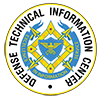Harsh environmental conditions—such as surface temperatures reaching thousands of degrees Fahrenheit—make it challenging to accurately measure temperatures and heat flux on hypersonic flight systems.
But a mechanical engineering associate professor at The University of Texas at Arlington (UTA) believes a new additive manufacturing technology can withstand those conditions and may be used to provide reliable measurements.
With help from a Small Business Innovation Research grant from the Department of Defense, Panos Shiakolas is exploring ceramic and other non-metallic materials to fabricate novel advanced temperature and heat flux sensors.
Shiakolas is working with Luca Maddalena, a professor of aerospace engineering at UTA and an expert in hypersonic aerothermodynamics. Maddalena is also director of UTA”s Aerodynamics Research Center and recently brought online a new arc-jet heated hypersonic wind tunnel that is the only one of its kind at a university in the United States.


